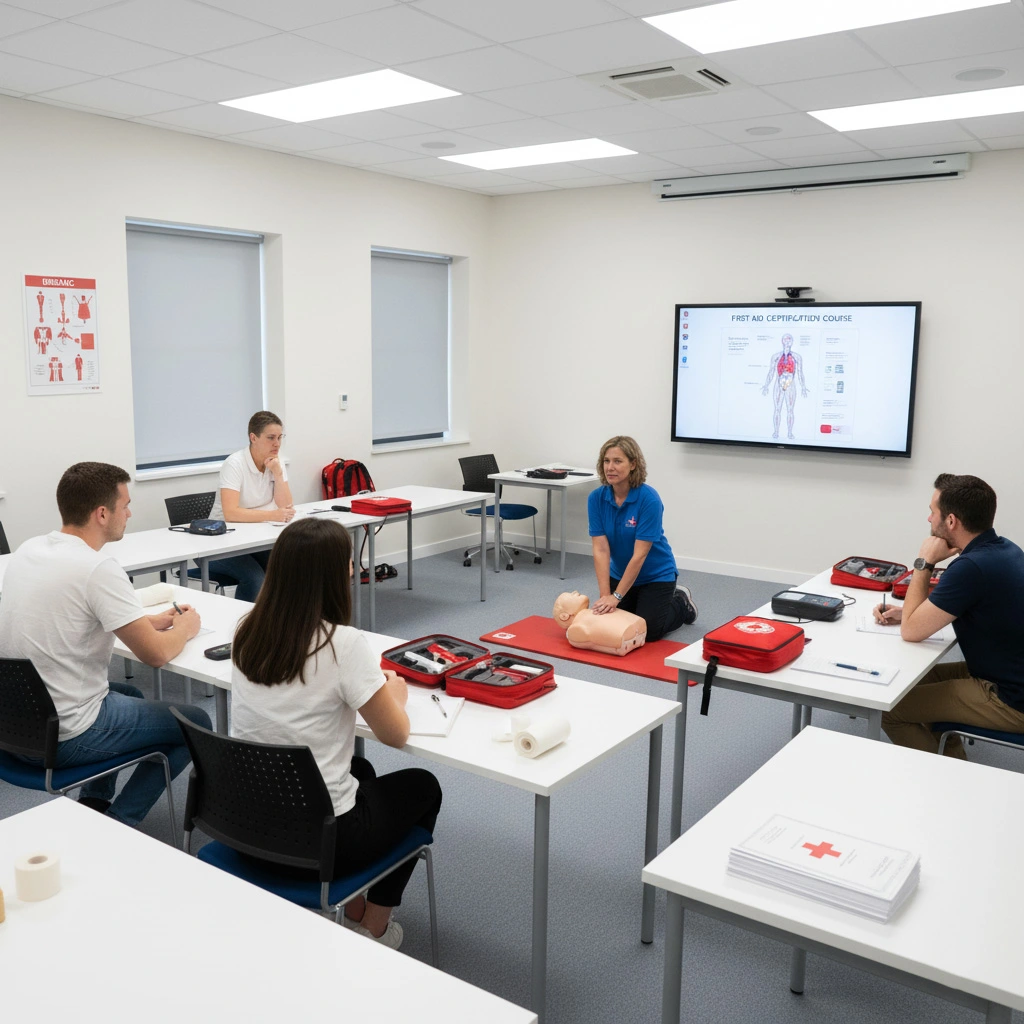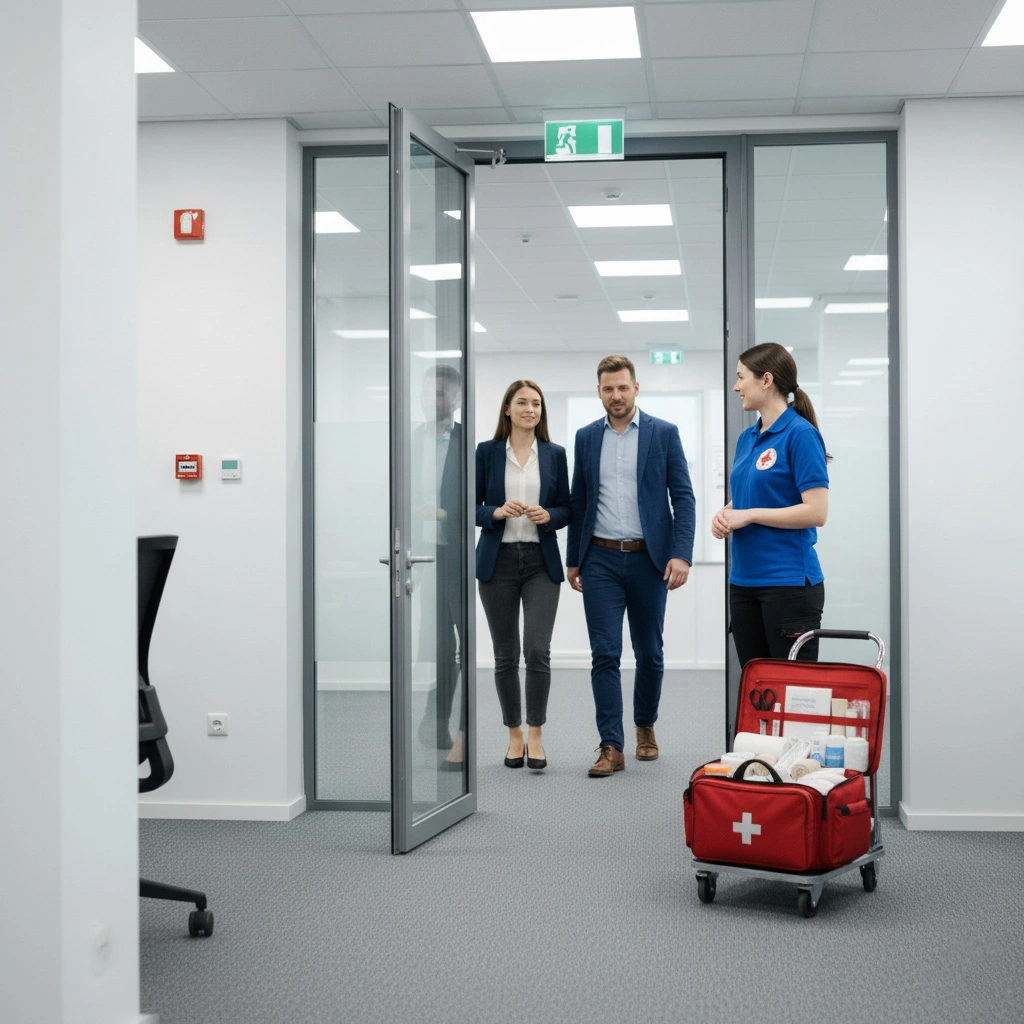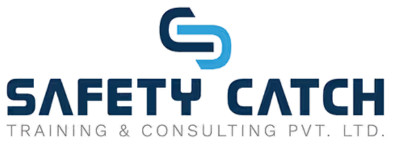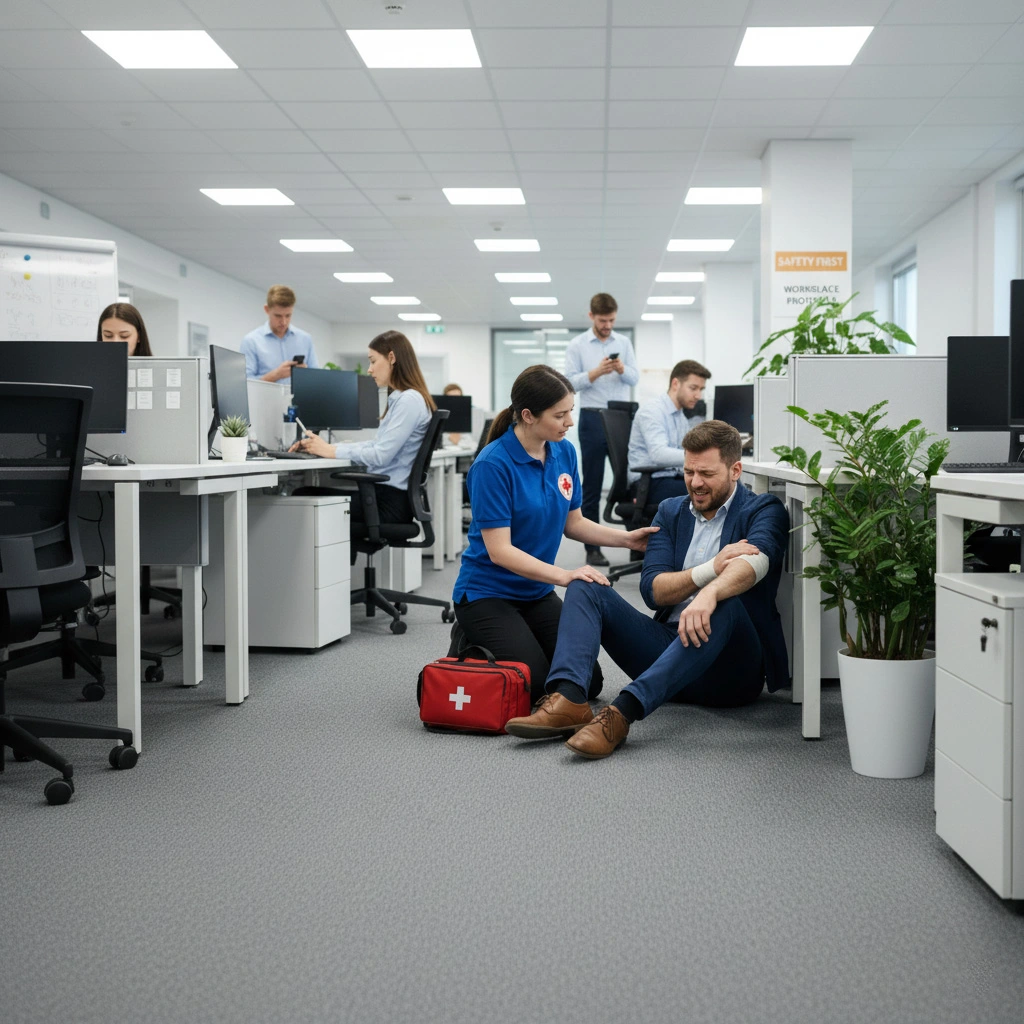When someone collapses at work, chokes during lunch, or suffers a serious injury, those first few minutes matter more than you might think. That’s where a trained first aider steps in—not as a replacement for medical professionals, but as the crucial bridge between an emergency and proper medical care.
If you’re considering becoming a first aider or simply want to understand what the role involves, you’ve come to the right place. Let’s walk through everything you need to know about first aider duties, from the moment they arrive at an incident to the follow-up that comes after.
What Exactly Does a First Aider Do?
A first aider is someone who’s received practical training to provide immediate medical assistance to anyone who’s injured or suddenly taken ill. Think of them as the person who knows what to do when everyone else is panicking—the one who can keep someone stable until paramedics arrive or until the person can get to a hospital themselves.
But here’s what many people don’t realise: being a first aider isn’t just about bandaging wounds or performing CPR. The role carries a range of responsibilities that extend well beyond the moment of crisis.
The Core Duties: What Every First Aider Must Do

1. Assess the Situation Quickly and Calmly
The first thing any first aider does when arriving at an incident is take stock. This isn’t about rushing in heroically—it’s about understanding what’s actually happened before taking action.
This assessment involves three key questions:
- Safety: Is there any immediate danger to me, the casualty, or bystanders?
- Scene: What caused this incident? What am I dealing with?
- Situation: How many people are injured? Are there children or elderly individuals involved?
A good first aider processes this information within seconds, staying calm even when others around them are losing their composure. That calmness isn’t just about looking professional—it actually helps everyone involved feel more secure.
2. Protect Themselves and Others from Harm
Here’s a duty that might surprise you: a first aider’s number one responsibility is protecting themselves first. This might sound counterintuitive when someone needs help, but it makes perfect sense when you think about it. If you become a casualty while trying to help someone else, you’ve just made the situation worse.
What does this mean in practice?
- Never approach a casualty if doing so puts you at risk
- Check for hazards like live electrical wires, traffic, fire, or chemical spills
- Use personal protective equipment when available
- Only move a casualty if leaving them in place would cause more harm
- Call 999 immediately if you can’t make the area safe before approaching
3. Provide Reassurance and Communication
Imagine you’ve just been injured and you’re scared, in pain, and unsure what’s happening. Now imagine someone approaches, introduces themselves calmly, explains what they’re doing, and tells you that you’re going to be okay. That reassurance can make an enormous difference.
A first aider must:
- Introduce themselves to the casualty
- Explain what’s happening and why
- Keep the person informed before performing any treatment
- Treat everyone with dignity and respect
- Stay with the casualty until help arrives or they’re stable enough to seek further care themselves
Good communication extends beyond the casualty too. First aiders need to clearly convey information to emergency services, explaining the situation, the treatment provided, and any relevant medical history they’ve gathered.
4. Assess and Monitor the Casualty
Before administering any treatment, a first aider needs to properly assess the person who’s been injured or taken ill. If the person is conscious, this means asking what happened and where it hurts. If they’re unresponsive, you’ll need to use systematic assessment methods like DRS ABC (Danger, Response, Send for help, Airway, Breathing, CPR).
When there are multiple casualties, first aiders must prioritise—helping those with life-threatening conditions before moving on to less serious injuries.
5. Administer Appropriate First Aid Treatment
This is what most people picture when they think about first aiders: the actual hands-on care. But here’s an important point—a first aider should only provide treatment they’re confident they can perform correctly.
Common treatments include:
- Performing CPR or using an AED (defibrillator)
- Placing unconscious casualties in the recovery position
- Controlling bleeding through pressure and elevation
- Treating burns, cuts, and wounds
- Managing choking incidents
- Immobilising suspected fractures
- Treating shock
If a situation feels beyond your training or confidence level, the responsible thing to do is call for help and wait. Sometimes the best first aid is simply stabilizing someone and keeping them comfortable until professionals arrive.
6. Arrange for Additional Medical Help
A crucial part of first aid is recognizing when someone needs more than you can provide. First aiders must judge whether a situation requires:
- Calling 999 for an ambulance
- Arranging transport to A&E
- Advising the person to see their GP
- Suggesting they call 111 for medical advice
Many situations don’t require emergency services, but knowing the difference requires good judgment and training.
7. Maintain Accurate Records
Once the immediate crisis has passed, the work isn’t over. First aiders have administrative duties too, including documenting incidents properly. This typically means recording:
- Date, time, and location of the incident
- Names of those involved
- Nature of the injury or illness
- Treatment provided
- Whether emergency services were called
- Any relevant observations
These records serve multiple purposes—they help track workplace safety trends, provide information for insurance or legal purposes, and ensure proper follow-up care.
Beyond the Emergency: Ongoing First Aider Responsibilities
Keep Skills Current
First aid training doesn’t last forever. Certificates are typically valid for three years, after which first aiders need to retrain. However, best practice includes annual refresher courses to ensure skills don’t go rusty. After all, you don’t want to be fumbling through half-remembered CPR techniques when someone’s life depends on it.
Know Your Workplace Hazards
Every workplace has its own unique risks. A construction site has different hazards compared to an office or a school. Good first aiders familiarize themselves with their environment’s specific risks and may request additional training if needed. They also know where first aid kits, AEDs, and other emergency equipment are located.
Maintain First Aid Equipment
Someone needs to check that first aid kits are properly stocked, that AEDs are functional, and that equipment hasn’t expired. In many workplaces, this responsibility falls to designated first aiders.
The 3 Ps of First Aid: A Framework for Action

Many training programs teach first aiders to think about their role through three core principles:
Preserve Life: This is the ultimate priority. First aiders work to keep casualties alive by addressing immediate life-threatening conditions first.
Prevent Worsening: Once immediate dangers are addressed, focus shifts to ensuring the person’s condition doesn’t worsen. This might mean stabilising an injury, preventing infection, or simply keeping someone still and comfortable.
Promote Recovery: When possible, first aiders take steps to help the healing process begin. This includes providing reassurance, ensuring comfort, and managing pain where appropriate.
What Makes a Good First Aider? Essential Qualities
Beyond the technical skills, certain personal qualities make someone well-suited to being a first aider:
Communication Skills: You need to communicate clearly with casualties, bystanders, and emergency services. Your words can calm panic and build trust when it matters most.
Ability to Work Under Pressure: First aid scenarios range from minor nosebleeds to cardiac arrests. Whatever the situation, you need to stay composed and act decisively.
Teamwork: While you might be the first on the scene, you’ll often need to coordinate with others—whether that’s asking bystanders to call for help or working alongside paramedics when they arrive.
Empathy and Positivity: People in medical emergencies are scared. A first aider who combines competence with genuine warmth makes a difficult situation more bearable.
Quick Thinking: Not every scenario fits neatly into what you learned in training. Good first aiders can adapt and make sound decisions even in unpredictable situations.
Legal Aspects: What First Aiders Need to Know
The Health and Safety (First Aid) Regulations 1981 require employers to provide adequate first aid provisions based on their workplace’s specific risks and size. For first aiders themselves, there are a few legal points worth understanding:
- You have a duty of care to provide appropriate assistance within your level of training
- You’re protected under Good Samaritan principles when acting in good faith
- You should never attempt treatments beyond your competency level
- Proper record-keeping isn’t just good practice—it’s often a legal requirement
How Many First Aiders Does a Workplace Need?
This depends on several factors, including:
- The number of employees (roughly one first aider per 50-100 employees for low-risk workplaces)
- The workplace layout and how staff are spread out
- The nature of work and its associated risks
- Whether employees work shifts or unusual hours
Some smaller, low-risk workplaces might only require an “appointed person” rather than a fully qualified first aider. This person manages first aid arrangements and calls emergency services but doesn’t need formal first aid training.
Types of First Aid Training

If you’re interested in becoming a first aider, you’ll typically encounter two main qualifications:
Emergency First Aid at Work (EFAW): This one-day Level 3 course covers essential skills like CPR, managing bleeding and wounds, dealing with choking, and handling common minor injuries. It’s suitable for lower-risk workplaces.
First Aid at Work (FAW): This comprehensive three-day Level 3 course goes deeper, covering everything in EFAW plus additional scenarios like seizures, heart attacks, diabetic emergencies, and severe allergic reactions. It’s designed for higher-risk environments.
Some first aiders also pursue specialist training in areas like paediatric first aid, mental health first aid, or wilderness first aid, depending on their specific context.
The Real Impact of Being a First Aider

At the end of the day, first aiders do more than just apply bandages and call ambulances. They provide a sense of security for their colleagues, knowing that if something goes wrong, someone nearby knows what to do. They can prevent minor injuries from becoming major ones. And in critical situations, they can quite literally save lives.
It’s a responsibility that shouldn’t be taken lightly, but it’s also one of the most rewarding roles you can take on. Knowing you have the skills to make a genuine difference in an emergency—that’s something truly valuable.
Final Thoughts
The duties of a first aider extend far beyond what most people imagine. From the initial assessment of a scene through to record-keeping after an incident, first aiders balance technical knowledge with soft skills, quick thinking with careful consideration, and confidence with humility about their limitations.
If you’re thinking about becoming a first aider, you’re considering a role that’s genuinely important. Yes, it comes with responsibilities, but it also comes with the knowledge that when someone needs help, you’ll know exactly what to do.
And in a world where emergencies can happen anywhere, anytime, that’s a skill worth having.
want to join our latest Medic First Aid Course? Fill Out The Form Today

